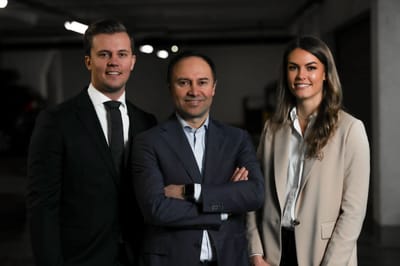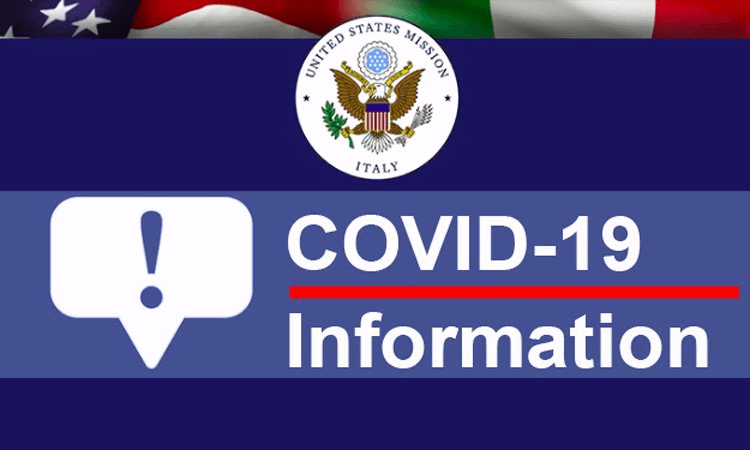Covid-19 TNALT Solution Providers
TNALT has partnered with an association of Chief Executive Officers (CEO) to guide us on identification of possible Covid-19 solutions. They provided an outreach to CEOs worldwide to obtain the necessary information physicians require to make informed, timely decisions in this chaotic environment we live in today. The following links were provided by those firms with possible solutions. We thank all CEOs that contribute to this worldwide effort.
SOLUTION SANDBOX
The capacity to leverage aggregated purchasing power of the collective participants (e.g. billions of dollars) shines a very bright light on the work we are able to conduct.TNALT continues to search/evaluate various interoperability solutions allowing for different information systems, devices, and applications (systems) to access, exchange, integrate and cooperatively use data in a coordinated manner, within and across organizational, regional, and national boundaries, to provide timely and seamless portability of information and optimize the health of individuals and populations globally. TNALT's goal of interoperability in healthcare is the access and sharing of data securely across the entire spectrum of care to improve patient outcomes and streamline care. There are estimates that interoperability can reduce healthcare costs by Tens of Billions of Dollars$$$, and provide capability for rapid deployment of a scalable healthcare workforce, to any community (including rural), at any time.
RECOGNIZING WORLD CLASS SOLUTIONS
Kohler (Leading with a purpose), Avaya Solutions: Leverage Automated (Outbound) Communication solutions and scale your ability to reach out to individuals and groups over voice, and SMS, and track responses. NetApp has a World Class Solution to “Rapid Response Scaling of Telemedicine” Salesforce with their "Contact Tracing", and Apple and Google are building a coronavirus tracking system. The workforce requires resilient critical infrastructure to ensure operational integrity.
RECOGNIZING CLIMATE SAVING SOLUTIONS
The nation requires New Engineered Co2 Removal Pathways such as that offered by Carbon Recycling.
LESSONS LEARNED
EVOLUTION OF 21ST CENTURY REMOTE MEDICAL WORKFORCE & DIGITAL PLACEMAKING
Do you have family members working on the Frontlines dealing with this COVID-19 crisis? We do!
Many physicians are completely handcuffed by cross competition of hospitals that need to coordinate limited Covid-19 resources in this environment. In most states, a patient’s ZIP Code will determine whether they die from Covid-19.
TNALT members identified a regional approach to meeting the community’s needs as essential because:
• Different hospitals will face shortages at different times;
• Some hospitals offer more specialized care;
• Some populations will suffer more from complications from COVID-19 than others.
TNALT has partnered with an association of Chief Executive Officers (CEO) to guide us on Covid-19 solutions aligned with provisioning more rapid comprehensive response to medical needs through a “Remote Medical Workforce”. As there exists (Cross Industry) widespread inclination to gravitate to greater dependency on a Virtual Workforce, TNALT is being guided by multiple corporate participants in development of a “Digital Placemaking Best Practices” data base for the Remote Medical Workforce, at the local level.
Our partner in this endeavor includes experts dealing with all aspects of The Remote Work Environment. They continually update all TNALT participants forward on location specific “Case Studies” including:.
1) Technology required for physician to practice remotely,
2) Services & Products to augment their individual lifestyle needs to practice remotely,
3) Alignment of medical community support & sharing structure at local level,
4) Coordination with firms servicing medical industry at remote level (e.g. hospital, healthcare clinics etc..),
5) The resilience of existing critical infrastructure.
The TNALT process includes an evaluation of the resilience of critical infrastructure utilizing a Critical Infrastructure Resilience Index (CIRI) that measures impact of dollars spent on critical infrastructure to required regional resilience of same. This is necessary for development of the Telehealth Center, and support of operational personnel (e.g. 25 to 200 physicians-staff).
We have overwhelming support from tens of thousands of these Frontline Workers, and their respective families who are counting on us! We all have an obligation to better coordinate a SUSTAINABLE response.
Many physicians are completely handcuffed by cross competition of hospitals that need to coordinate limited Covid-19 resources in this environment. In most states, a patient’s ZIP Code will determine whether they die from Covid-19.
TNALT members identified a regional approach to meeting the community’s needs as essential because:
• Different hospitals will face shortages at different times;
• Some hospitals offer more specialized care;
• Some populations will suffer more from complications from COVID-19 than others.
TNALT has partnered with an association of Chief Executive Officers (CEO) to guide us on Covid-19 solutions aligned with provisioning more rapid comprehensive response to medical needs through a “Remote Medical Workforce”. As there exists (Cross Industry) widespread inclination to gravitate to greater dependency on a Virtual Workforce, TNALT is being guided by multiple corporate participants in development of a “Digital Placemaking Best Practices” data base for the Remote Medical Workforce, at the local level.
Our partner in this endeavor includes experts dealing with all aspects of The Remote Work Environment. They continually update all TNALT participants forward on location specific “Case Studies” including:.
1) Technology required for physician to practice remotely,
2) Services & Products to augment their individual lifestyle needs to practice remotely,
3) Alignment of medical community support & sharing structure at local level,
4) Coordination with firms servicing medical industry at remote level (e.g. hospital, healthcare clinics etc..),
5) The resilience of existing critical infrastructure.
The TNALT process includes an evaluation of the resilience of critical infrastructure utilizing a Critical Infrastructure Resilience Index (CIRI) that measures impact of dollars spent on critical infrastructure to required regional resilience of same. This is necessary for development of the Telehealth Center, and support of operational personnel (e.g. 25 to 200 physicians-staff).
We have overwhelming support from tens of thousands of these Frontline Workers, and their respective families who are counting on us! We all have an obligation to better coordinate a SUSTAINABLE response.

About
The National Association of Locum Tenens (TNALT) is a non-for-profit 501 (c)(3) association. We are an exclusive network empowering thousands of sub-specialists (Locum-Tenens) through a member-only association and centralized digital database. A profound paradigm shift in healthcare is underway and we are leading this movement with strategic corporate alliances coupled with a vast network of global physicians to transform the future of digital health.
Patient empowerment, the spread of digital technologies and the widening access to medical information coupled with global doctor shortages, rising life expectancy and the ever-higher numbers of chronic diseases call for a change in the practice of medicine.


Key Findings From Consumer-Centered Telehealth Experiences
Patient empowerment, the spread of digital technologies and the widening access to medical information coupled with global doctor shortages, rising life expectancy and the ever-higher numbers of chronic diseases call for a change in the practice of medicine.

- Doctors Say Medical Supplies and COVID-19 Testing Are Inadequate:
- 77% did not believe that their hospital or clinic had adequate medical supplies or equipment to manage the crisis. Overall, 73% reported not being able to test patients quickly and easily.
- There Are Not Enough Precautions in Place: Nearly 60% did not think there were enough coronavirus precautions in their clinical setting.
- Government Agencies Not Doing Enough: The majority of physicians (70%) did not think that government had taken appropriate measures to support the medical supply chain or had adequately responded to the pandemic.
- Finances May Impact Patients Getting Treatment: 48% of doctors reported concern that patients are avoiding testing or treatment due to financial barriers.
- Social Distancing is potentially an Under-Reaction: While social distancing is inconvenient and has large economic impacts, most – but not all – physicians agree that it is absolutely necessary to successfully fight this pandemic. 59% reported that current social distancing measures are appropriate, while 28% reported current measures are likely an under-reaction.
- Many Doctors Are Turning to Telemedicine: Over 80% of physicians have moved to, or are planning to adopt, telemedicine virtual visits with patients. Telemedicine can be beneficial in treating patients remotely, saving in-person visits for high-priority coronavirus patients.

Key Findings From Consumer-Centered Telehealth Experiences
- Team based care must include smart triggers
- Real world and online world must converge
- There cannot be friction for the user
- Physicians must be sensitive to data overload
- Consumers are the Hubs of their own healthcare data
- Converge data for interactions to be safe and meaningful
- Expand role for care team based on new data triggers
- Integrate technology and human interaction into the physical world
- Increase focus on patient data security
- Combating fraudulent claims of telemedicine costs (treatment and medication) from insurance companies
- Ensure sufficient and reliable data exists for care continuity
- Secure the safety and immutability of data exchanged between teleclinics and patients
- Ensure the credentials of doctors engaged can be verified by patients independently and remotely
Association
TNALT is focused on developing the nation's largest Locum-Tenens (LT) association that is comprised of exclusively member-only clinicians. The association is a sounding board for business direction, based on latest technology disruptions. We have brought our team to the table to form an "Information Sharing" initiative through the next generation market-network.
Our Values
We believe that technology can better enable the physician to accomplish their job, and enhance patient quality of care/life. We also believe that the physician deserves to be in better control of their own future. The interdependence of the physician, and the hospital can be better managed. The physician also should realize a better revenue model, with greater alignment of the revenue generated, with those providing the actual service.
It is understood the ancillary costs of healthcare (e.g. brick and mortar etc.) need to be accounted for, but the existing expense models appropriate funds for these services at the expense of an adequate proportion going to the physician. Hospitals exist as a direct result of the physicians that staff same.
Our Purpose
Our purpose is to educate, facilitate, and organize locum tenens physicians (who are a very diverse group with no common platform).
Create a model for disruption of the medical industry by providing more control, and accountability in the hands of the physicians, while enhancing patient care.
Empowering Physician Locum-Tenens (e-physicians)
Our Values
We believe that technology can better enable the physician to accomplish their job, and enhance patient quality of care/life. We also believe that the physician deserves to be in better control of their own future. The interdependence of the physician, and the hospital can be better managed. The physician also should realize a better revenue model, with greater alignment of the revenue generated, with those providing the actual service.
It is understood the ancillary costs of healthcare (e.g. brick and mortar etc.) need to be accounted for, but the existing expense models appropriate funds for these services at the expense of an adequate proportion going to the physician. Hospitals exist as a direct result of the physicians that staff same.
Our Purpose
Our purpose is to educate, facilitate, and organize locum tenens physicians (who are a very diverse group with no common platform).
Create a model for disruption of the medical industry by providing more control, and accountability in the hands of the physicians, while enhancing patient care.
Empowering Physician Locum-Tenens (e-physicians)
- “electronic,” where they use digital technologies in their practice with ease
- “enabled,” where they are enabled by regulations and guidelines
- “empowered,” where they are empowered by technologies that support their job and their empowered patients (e-patients)
- “experts” in the use of technologies in their practice or in knowing the best, most reliable, and trustworthy digital health sources and technologies
- “engaged,” when understanding the feelings and points of view of their patients, giving relevant feedback, and involving them throughout the whole healing process.

Trending
A blockchain expert explains for healthcare CIOs and CISOs how the distributed ledger technology can defend telehealth systems against hackers.
Read MoreThe healthcare industry, especially in the United States, often faces workforce shortages.
Read MoreA network of cooperative alternatives are replacing rampant exploitation with decent work.
Read MoreFive health care enterprises, including two national insurers, Spectrum Health of Michigan, Accenture and a medical-services staffing firm, will deploy blockchain technology in a new pilot program.
Read More






